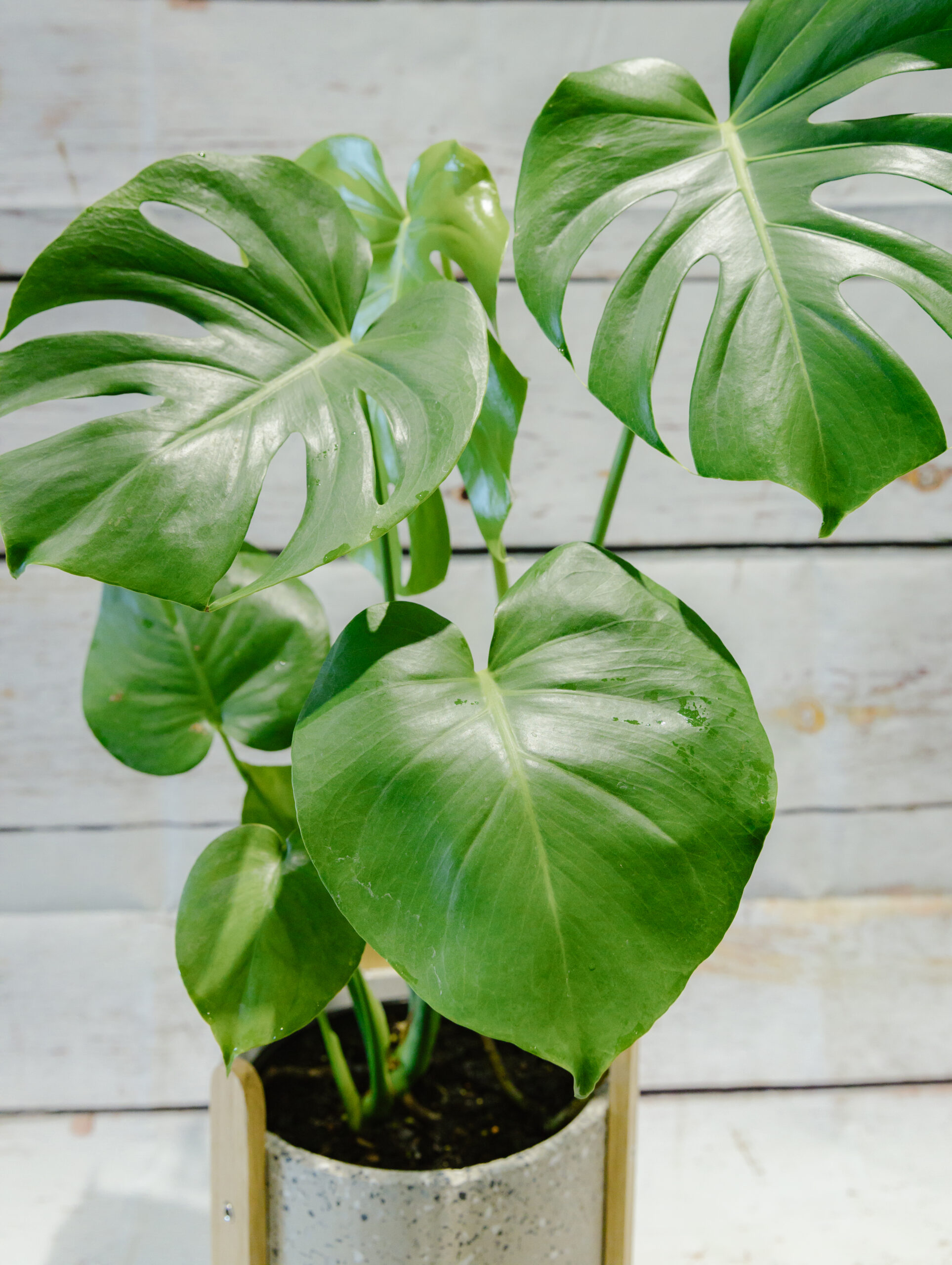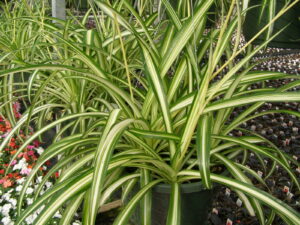When it comes to houseplants, the Monstera Deliciosa plant stands out with its striking foliage and unique growth pattern. This tropical beauty, also known as the Swiss cheese plant, is not only a stunning addition to any indoor space but also offers numerous benefits to its owner. In this article, we will delve into the fascinating world of the Monstera Deliciosa plant, exploring its origins, care tips, and the reasons why it has become such a popular choice among plant enthusiasts.
Origins and Appearance
The Monstera Deliciosa plant is native to the rainforests of Central and South America, where it thrives in warm, humid environments. Its distinctive leaves, which can grow to impressive sizes, feature large, deep green lobes with intricate perforations, resembling Swiss cheese. These holes serve a purpose in the plant’s natural habitat, allowing rain to pass through and reducing the risk of damage from strong winds.
When grown indoors, the Monstera Deliciosa plant typically reaches a height of about two to three feet, making it a perfect choice for those who desire a statement plant without the need for excessive space. With proper care and ideal conditions, this tropical beauty can even climb to great heights, showcasing its aerial roots and creating an impressive display of lush foliage.
Caring for Monstera Deliciosa
While the Monstera Deliciosa plant may seem like a high-maintenance choice, it is surprisingly easy to care for. With the right conditions and a little attention, this plant can thrive and bring joy to its owner for many years. Here are some essential care tips:
1. Light and Placement
Monstera Deliciosa plants prefer bright, indirect light. Placing them near a north or east-facing window is ideal, as it provides them with the right amount of sunlight without direct exposure to harsh rays. In low light conditions, the plant’s growth may slow down, and its leaves may lose their typical vibrant green color.
However, it is important to note that this plant can tolerate some degree of shade. This adaptability makes the Monstera Deliciosa an excellent choice for various indoor environments, including offices and rooms with limited natural light.
When it comes to placement, it is recommended to keep the plant away from cold drafts, as they can harm its delicate leaves. Additionally, be cautious of placing the Monstera Deliciosa too close to heating or air conditioning vents, as fluctuating temperatures can negatively impact its growth.
2. Temperature and Humidity
Being a tropical plant, the Monstera Deliciosa thrives in temperatures ranging from 65°F to 85°F (18°C to 29°C). While it can tolerate slightly cooler temperatures, anything below 50°F (10°C) may cause damage to the plant. Therefore, it is essential to keep it away from cold windows and ensure a stable temperature in the room.
Humidity is another crucial factor in the care of Monstera Deliciosa plants. These tropical beauties prefer a humid environment, similar to their natural habitat. If the air in your home is particularly dry, it is recommended to increase humidity levels by misting the plant regularly or placing it on a tray filled with water and pebbles. Alternatively, using a humidifier can provide consistent humidity levels, benefiting both the Monstera Deliciosa and other plants in your collection.
3. Watering and Soil
Proper watering is key to the health of any plant, and the Monstera Deliciosa is no exception. While it appreciates moisture, it is important to strike a balance and avoid overwatering, which can lead to root rot.
As a general rule, it is best to allow the top inch of soil to dry out before watering the plant again. This ensures that the roots have access to oxygen and helps prevent waterlogged conditions. It is also recommended to use well-draining soil to promote healthy root growth.
When watering, it is preferable to use room temperature water to avoid shocking the plant. Pour water onto the soil until it begins to drain from the bottom, ensuring thorough hydration. However, be cautious not to let the plant sit in standing water, as this can cause root rot.
4. Fertilization
Providing adequate nutrition is essential for the Monstera Deliciosa plant’s growth and overall health. Regular fertilization during the growing season (spring and summer) can help promote lush foliage and vigorous growth.
Using a balanced, water-soluble fertilizer diluted to half the recommended strength is recommended. Apply the fertilizer every two weeks, ensuring that the soil is already moist before feeding the plant. During the dormant season, reduce or suspend fertilization, as the plant’s growth slows down naturally.
Benefits of Having a Monstera Deliciosa Plant
Aside from its aesthetic appeal, owning a Monstera Deliciosa plant offers numerous benefits that go beyond its visual beauty. Here are some compelling reasons why this tropical beauty is a fantastic addition to any indoor space:
1. Air Purification
Indoor air pollution is a growing concern in modern households, with various pollutants affecting our health and well-being. The Monstera Deliciosa plant, like many other houseplants, acts as a natural air purifier. Its large leaves help to filter out toxins and improve air quality, creating a healthier living environment.
According to a study conducted by NASA, houseplants can effectively remove harmful substances from the air, including formaldehyde, benzene, and trichloroethylene. By introducing a Monstera Deliciosa plant into your home, you can enjoy cleaner air and reap the benefits of improved indoor air quality.
2. Stress Reduction
Bringing nature indoors has been proven to have a positive impact on our mental well-being. The presence of plants, including the Monstera Deliciosa, can help reduce stress, improve mood, and increase productivity.
Studies have shown that being surrounded by greenery can result in lower stress levels and increased feelings of calmness. The Monstera Deliciosa’s lush foliage and unique appearance can create a calming and inspiring atmosphere, making it an excellent choice for bedrooms, offices, or any space where relaxation is desired.
3. Aesthetic Appeal
With its large, perforated leaves and tropical vibe, the Monstera Deliciosa plant adds a touch of elegance and sophistication to any interior design. Whether placed in a modern, minimalist space or a bohemian, eclectic room, this plant effortlessly enhances the overall aesthetic and creates a focal point that draws the eye.
The Monstera Deliciosa’s ability to grow vertically, using its aerial roots, adds a unique dimension to any indoor space. By allowing the plant to climb a moss pole or trellis, you can create a stunning green wall that adds a sense of drama and beauty to your home.
Common Challenges and How to Overcome Them
While the Monstera Deliciosa plant is relatively easy to care for, it is not immune to certain challenges. By being aware of these common issues and taking proactive measures, you can ensure the health and longevity of your plant.
1. Yellowing Leaves
Yellowing leaves can be a sign of various problems, such as overwatering, underwatering, or nutrient deficiencies. To address this issue, examine your watering habits and adjust accordingly. Ensure that you are not overwatering the plant by allowing the top inch of soil to dry out before watering again.
If the soil is too dry, increase the frequency of watering. Additionally, consider fertilizing the plant with a balanced, water-soluble fertilizer to provide essential nutrients. If the yellowing leaves persist, you may need to inspect the roots for any signs of root rot or pests.
2. Pests
Like many houseplants, the Monstera Deliciosa can attract pests such as spider mites, mealybugs, and aphids. These pests can cause damage to the leaves and hinder the plant’s growth.
To combat pests, regularly inspect your plant for any signs of infestation, such as webbing, discoloration, or tiny insects. If you detect pests, you can try wiping the leaves with a damp cloth or using an organic insecticidal soap to eliminate them. For severe infestations, you may need to resort to stronger pesticides, but always follow the instructions carefully and avoid harming beneficial insects.
3. Lack of Growth
If your Monstera Deliciosa plant seems to have stalled in its growth, there may be several reasons behind it. Insufficient light, improper watering, or inadequate nutrition can all contribute to a lack of growth.
Assess the lighting conditions in your home and consider moving the plant to a brighter spot if needed. Check your watering habits and ensure that you are providing enough moisture without overwatering. Finally, evaluate your fertilization routine and adjust if necessary.
Conclusion
The Monstera Deliciosa plant is not only a tropical beauty but also a versatile and rewarding addition to any indoor space. With its striking foliage, airpurifying benefits, and ease of care, it is no wonder that this plant has gained popularity among plant lovers. By following the proper care tips and providing the ideal conditions, you can enjoy the beauty and benefits of the Monstera Deliciosa for years to come.
In conclusion, the Monstera Deliciosa plant, with its unique appearance and tropical charm, is a captivating choice for any indoor space. Its large, perforated leaves and aerial roots create a stunning display of greenery that instantly enhances the aesthetic appeal of a room. Beyond its visual beauty, this plant offers numerous benefits, including air purification and stress reduction. By caring for the Monstera Deliciosa with the right amount of light, humidity, and water, you can ensure its health and longevity. So why not bring a touch of the tropics into your home with this remarkable plant?
Frequently Asked Questions
1. How often should I water my Monstera Deliciosa plant?
It is best to allow the top inch of soil to dry out before watering the Monstera Deliciosa again. This usually translates to watering every 1-2 weeks, depending on the environmental conditions and the size of the plant.
2. Can I propagate my Monstera Deliciosa plant?
Yes, the Monstera Deliciosa is relatively easy to propagate. You can propagate it through stem cuttings, placing them in water or directly in soil. Ensure that each cutting has a node, as this is where new roots will develop.
3. How can I increase humidity for my Monstera Deliciosa plant?
If the air in your home is particularly dry, you can increase humidity levels for your Monstera Deliciosa plant by misting it regularly. Placing the plant on a tray filled with water and pebbles can also help create a humid microclimate around the plant. Using a humidifier is another effective way to maintain consistent humidity levels.
4. Can the Monstera Deliciosa plant tolerate low light conditions?
While the Monstera Deliciosa prefers bright, indirect light, it can tolerate some degree of shade. However, in low light conditions, its growth may slow down, and the leaves may lose their vibrant green color. It is best to place the plant near a north or east-facing window to provide it with the ideal amount of sunlight.
5. How do I prune my Monstera Deliciosa plant?
To prune your Monstera Deliciosa, use clean, sharp pruning shears to remove any dead, damaged, or yellowing leaves. You can also trim back any excessive growth to maintain the desired shape and size of the plant. Pruning can be done throughout the year as needed.
In summary, the Monstera Deliciosa plant is a tropical beauty that brings elegance and charm to any indoor space. Its distinctive appearance, air-purifying benefits, and ease of care make it a popular choice among plant enthusiasts. By providing the right conditions and following proper care tips, you can enjoy the beauty and benefits of this remarkable plant for years to come. So go ahead and bring a touch of the tropics into your home with the Monstera Deliciosa!



